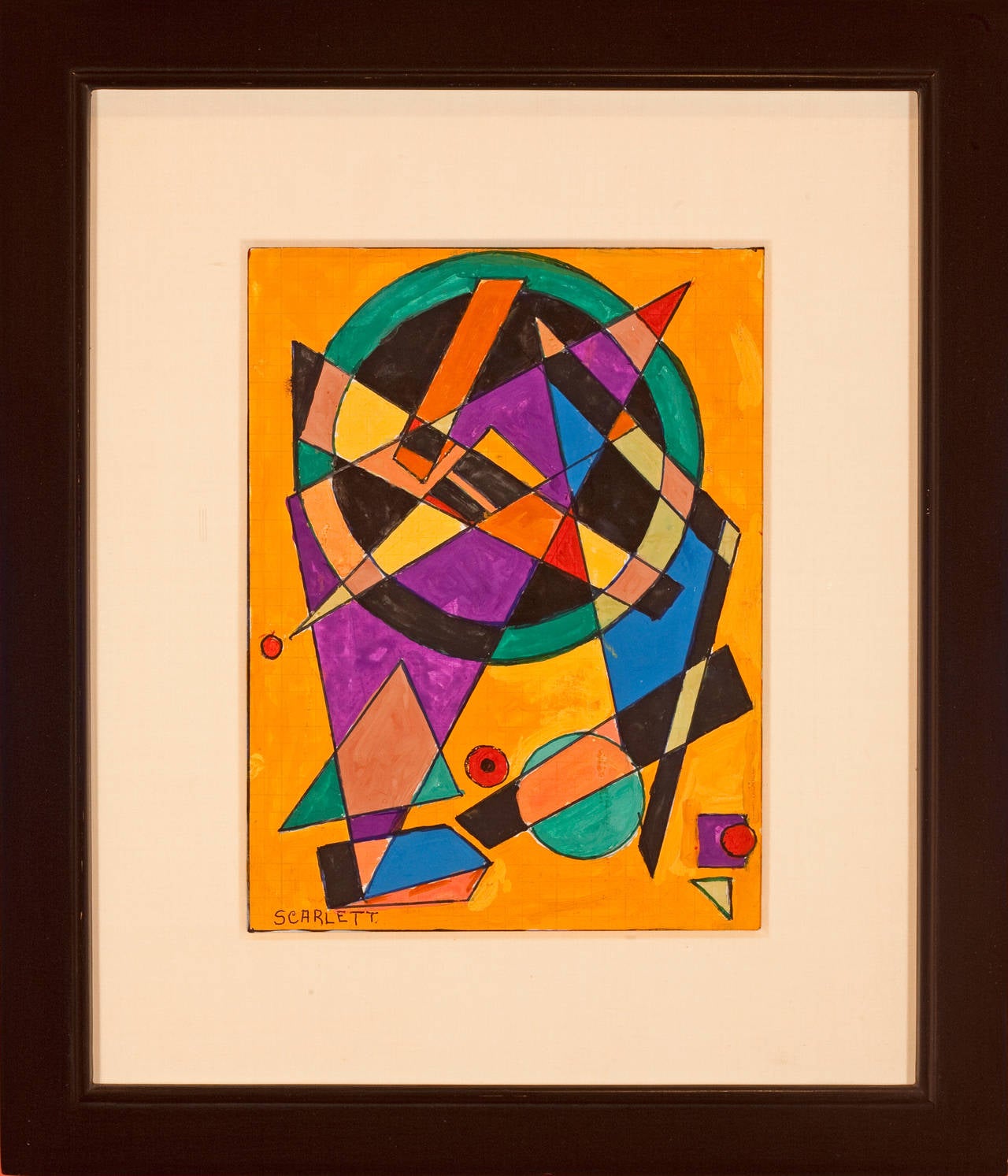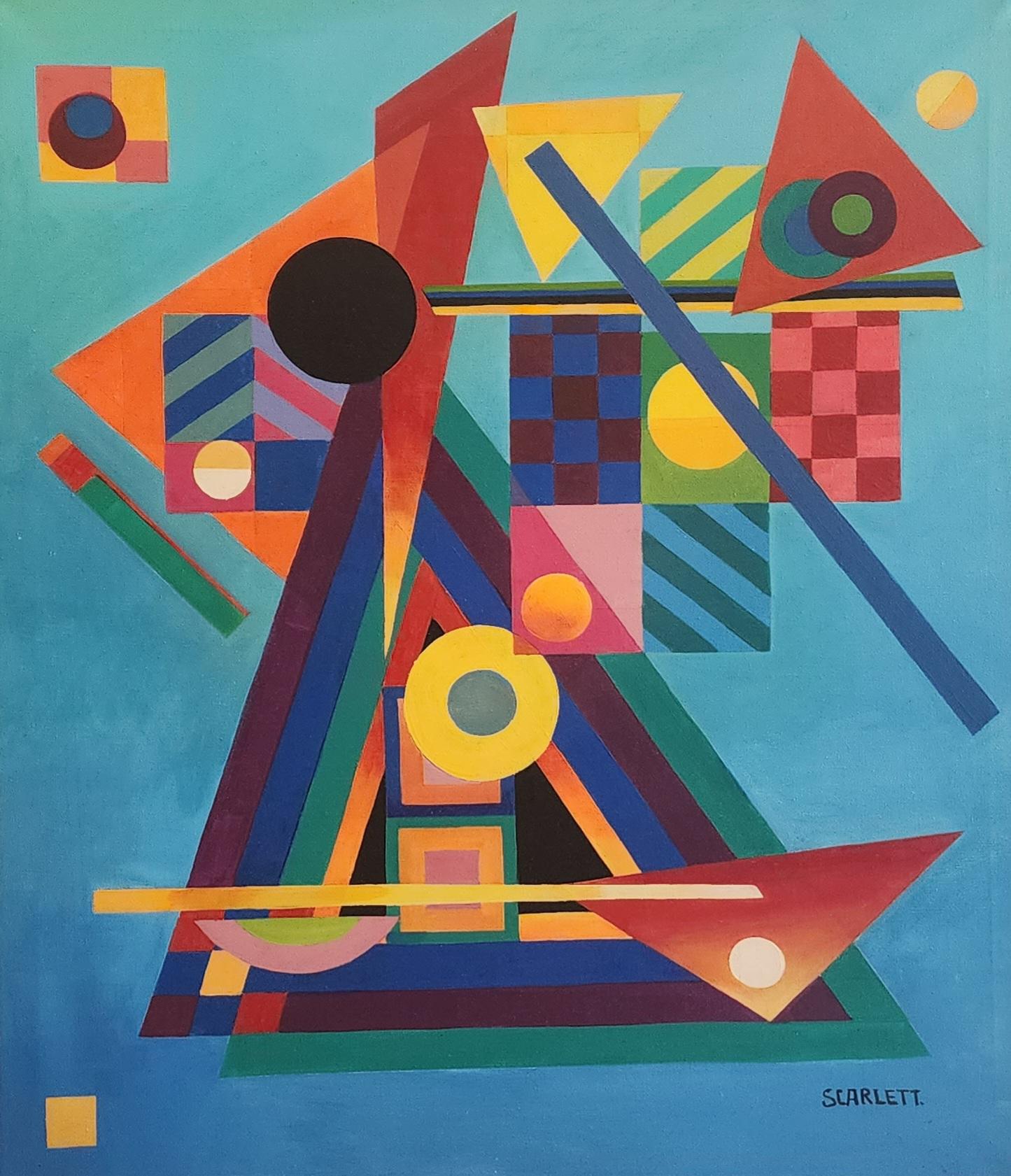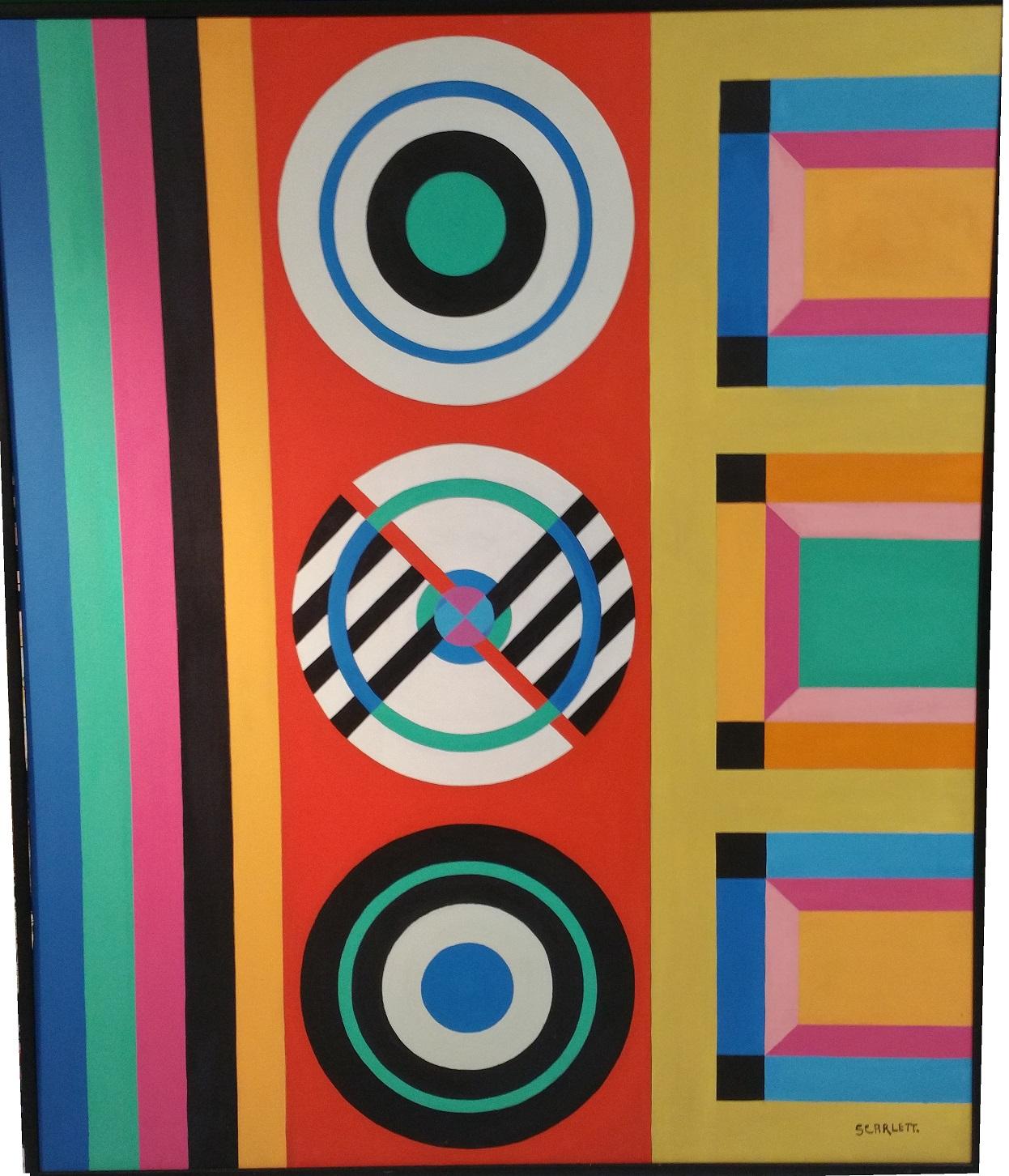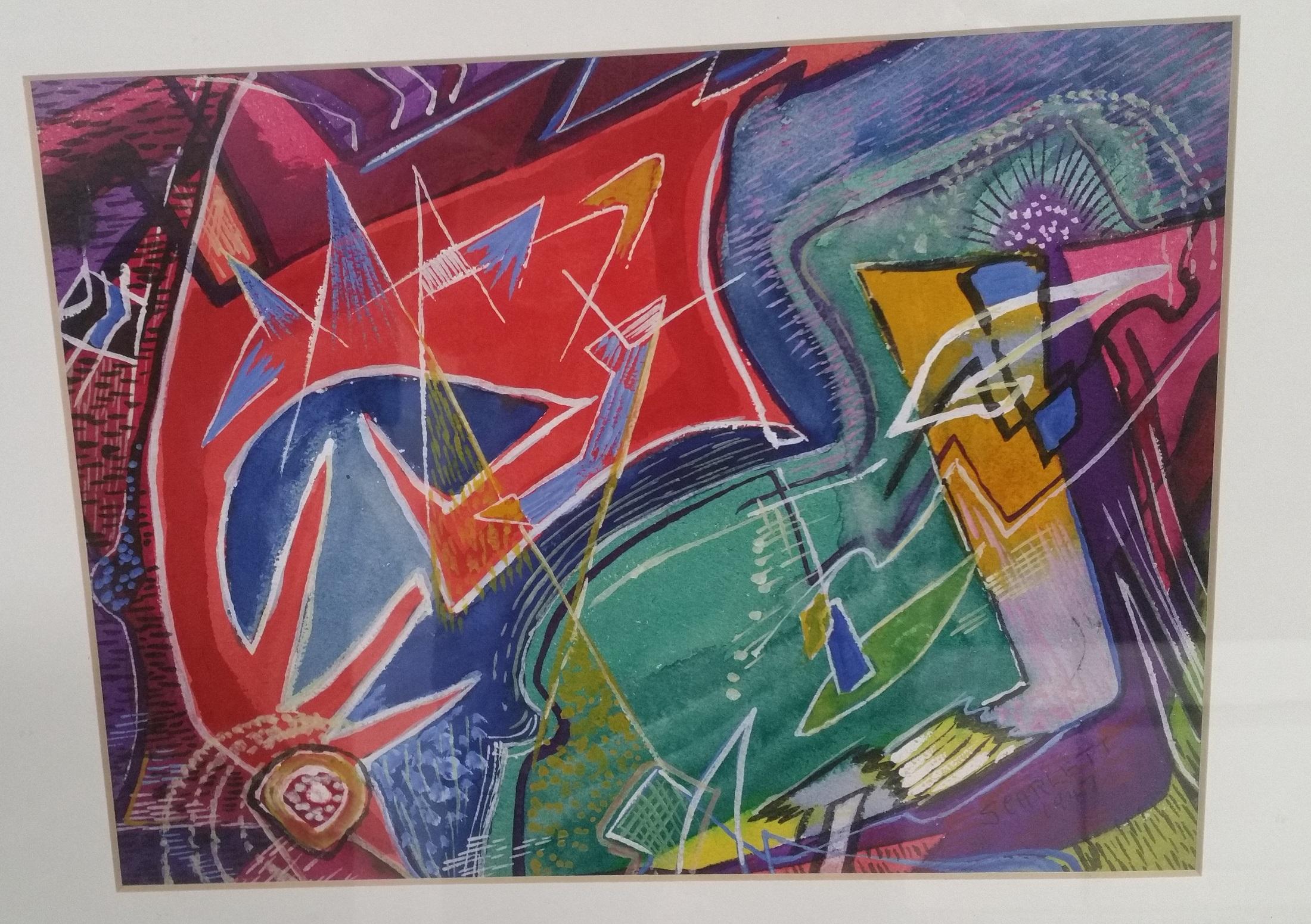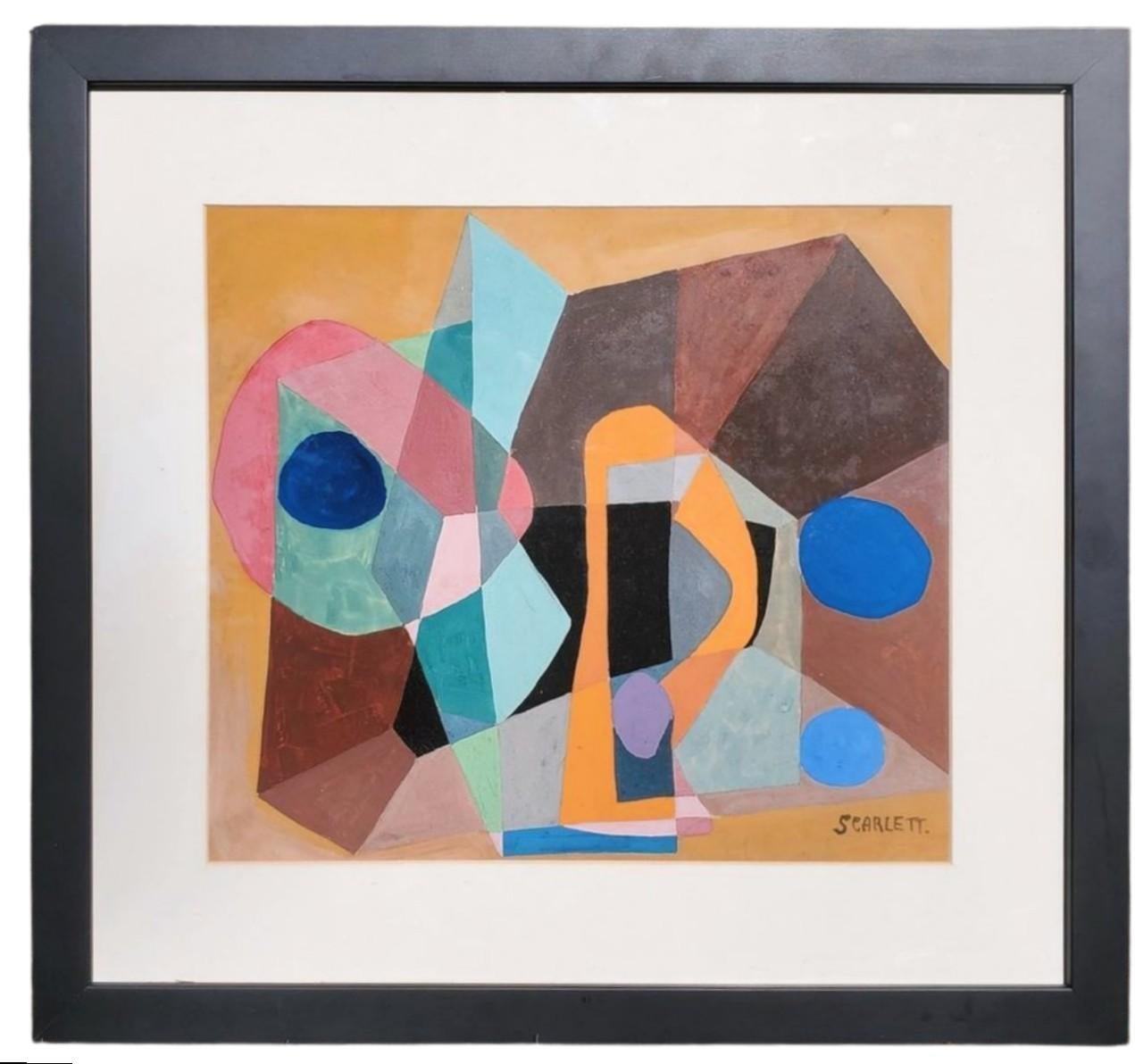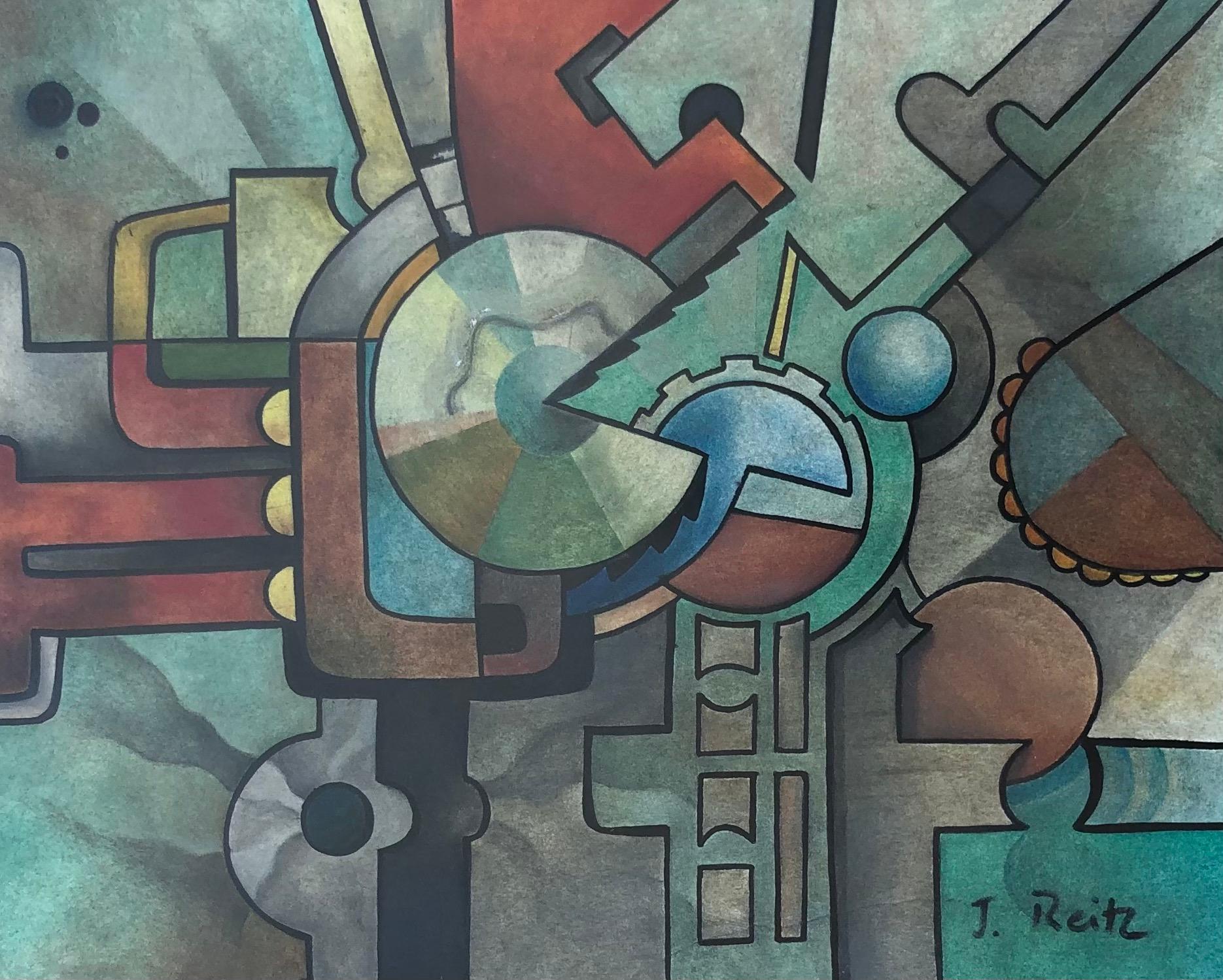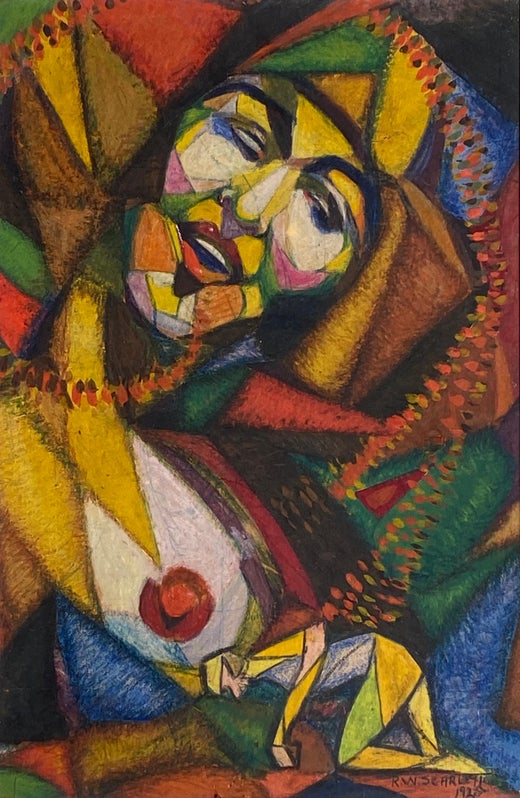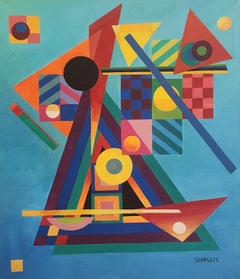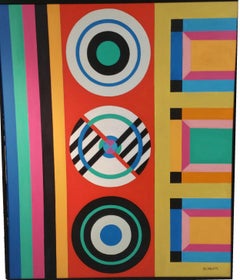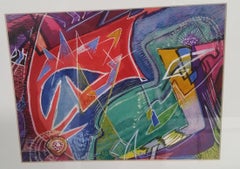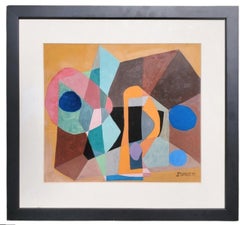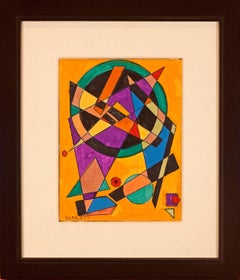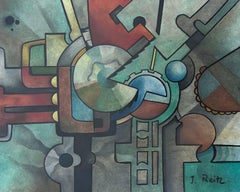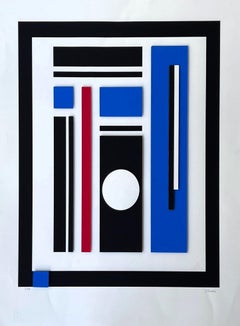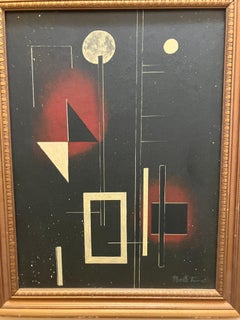Rolph ScarlettGeometric Composition
About the Item
- Creator:Rolph Scarlett (1891-1984, American)
- Dimensions:Height: 19.5 in (49.53 cm)Width: 26 in (66.04 cm)Depth: 1 in (2.54 cm)
- Medium:
- Movement & Style:
- Period:
- Condition:
- Gallery Location:Saratoga Springs, NY
- Reference Number:1stDibs: LU17026853652
Rolph Scarlett
Rolph Scarlett was a painter of geometric abstraction during the American avant-garde movement of the 1930s and 1940s. Scarlett was born in Guelph, Ontario, Canada in 1889, he left Canada at the age of 18 to go to New York City and returned to Canada during the years of World War I. However, by 1924, Scarlett had established New York City as his home. While he was beginning his career as an abstract painter, he was designing stage scenery for George Bernard Shaw's play, Man and Superman and the Rockettes at Radio City Music Hall. In 1939, while creating the Museum of Non-Objective Painting (later the Solomon R. Guggenheim Museum), Director Hilla Rebay began to take an interest in Scarlett's work. By 1940, he had become the new museum's chief lecturer. By 1953, the Guggenheim owned nearly 60 of his paintings and monoprints. Scarlett later became a resident of the Woodstock art colony for more than 25 years and showed his work in the Woodstock exhibits.
- ShippingRetrieving quote...Shipping from: Saratoga Springs, NY
- Return Policy
More From This Seller
View All1960s Abstract Geometric Abstract Paintings
Oil, Canvas
1960s Abstract Geometric Abstract Paintings
Canvas, Oil
1940s Abstract Abstract Paintings
Gouache
1950s Abstract Abstract Paintings
Gouache, Archival Paper
Mid-20th Century Abstract Abstract Paintings
Canvas, Oil
Mid-20th Century Abstract Abstract Paintings
Oil, Paper
You May Also Like
20th Century Abstract Geometric Abstract Paintings
Paper, Gouache
Mid-20th Century Abstract Geometric Abstract Paintings
Oil
1980s Abstract Abstract Prints
Silk
Mid-20th Century Abstract Geometric Abstract Paintings
Oil
Mid-20th Century Abstract Geometric Abstract Paintings
Gouache, Mixed Media, Pencil
Mid-20th Century Abstract Geometric Abstract Paintings
Encaustic
